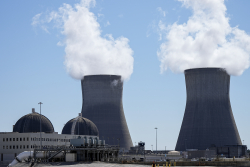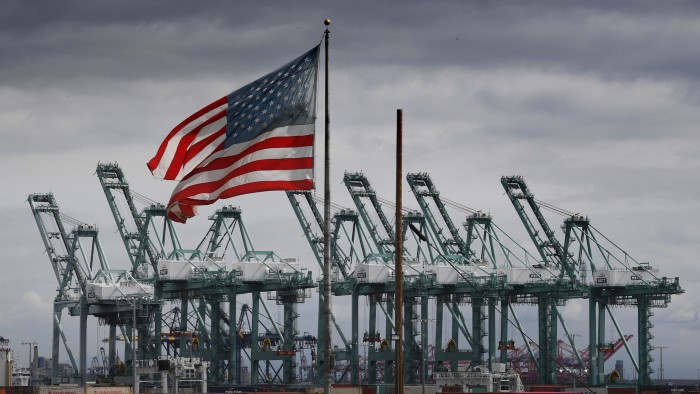Guest Essay by Kip Hansen — 28 December 2024 — 1800 words – lots of images

Reservoirs are simple. They can be viewed as a Rain Barrel with a water spout (from a roof, for instance) supplying incoming water, a faucet near the bottom of the barrel for extracting water from the barrel, and some overflow mechanism.
The Great Salt Lake – an Exemplar
One of the iconic geographical features of the American west is the Great Salt Lake (GSL). Now the GSL is not a reservoir, but it can serve us here as a lesson about the reservoirs of the Southwestern US.
A recent letter to the Salt Lake Tribune from a subscriber rightly accused the newspaper and Utah Public Radio of misrepresenting the plight of the GSL in a recent three-part series. The reader, Maria Archibald, writes succinctly:
“…snow (or lack thereof) is not even a primary cause of the lake’s decline. Precipitation cannot solve a problem it did not cause, and asserting otherwise is both incorrect and dangerous. Sure, the extra snow [winter 2022 and 2023] offered Great Salt Lake a temporary reprieve and may have postponed its collapse by a few years, but humans continue to guzzle one million acre-feet more than our water system can sustain….”
Archibald is absolutely correct; weather, which affects precipitation (mostly snowpack in the case of the GSL), is NOT the reason the lake levels are low, getting lower or remaining low. I found the same to be true when I wrote about this issue last year. I recommend Andy May’s most recent essay on drought in the Great Southwest for an answer to this question.
For the Great Salt Lake, there is only inflow and evaporation (which is the outflow). The volume of water in the lake at any one time (measured by its surface level) depends almost entirely on the amount of water ALLOWED to enter the lake. Evaporation changes with weather (mostly temperature) but is not a controllable variable. In our GSL Water Barrel example, water is diverted from the downspout – diverted from all of the streams and rivers that naturally flow to the GSL, for human use as drinking water and irrigation for agricultural. These uses annually divert 2.1 million acre feet (MAF) of the water that would otherwise enter the lake leaving the lake with an annual deficit – overall loss – of 1.2 million acre feet of water. Thus, the lake cannot return to the size preferred by conservationists and environmentalists [pdf].
Note: That deficit, in words, is three hundred ninety-one billion twenty-one million one hundred thirty thousand gallons of water.
For many, water in the Southwest means The Colorado River System

Two weeks ago, I wrote about U.S. Water Woes in the northeast part of the country – featuring NY City and Philadelphia. Today I’d like to discuss the region most associated with not enough water in the eyes of most citizens and the main stream media – America’s great Southwest region.
This part of the United States is generally arid – dry – and almost all of it is recognizably to most people as desert (though not strictly so in the Köppen Classifications).

[ click here for full sized continental image ]
The yellow-beige-brown colors are arid areas…the purples are high mountains with snow cover in winter. The greenish areas in Arizona and Southern California are a climate type called Warm Temperate with Dry Hot/Warm summers – they are not lush green areas as the color would seem to imply. These are Climate Types – they have been the same for hundreds, and maybe many thousands of years.

Normally, arid dry areas are sparsely populated, as inhabitants have to raise crops and keep herds to eat, and agriculture and herding require water. Little water = little food. But sometimes things don’t go that way. The true Desert Southwest, as shown in the image here, is one of the fastest growing population areas of the country. As civilization has advanced, humans have found ways to live in challenging environments – even the U.S. Southwest.

Add to that image, the Los Angeles/San Diego megalopolis, which occupies the entire coast west of that desert (shown in blue in the California map). The population of the LA/SD megalopolis is about 23 million today. Some of the water for Los Angeles is supplied by the Colorado.
Where does the water come from for all these people? “The mighty Colorado River serves 40 million people in seven states and two states in Mexico. It also irrigates 5.5 million agricultural acres of land, including 15% of American agriculture and about 90% of the nation’s winter vegetables.” That 40 million people represents 12% of the population of the United States.
So, as in the case of the U.S. Northeast, some the precipitation that falls, as rain or snow, is captured in reservoirs that hold the water and slowly feed it to the consumers.
So, what’s all the fuss about?

Lake Mead, formed by the Hoover Dam, is the primary reservoir for Colorado River water, by which we judge the availability of water for the southwest. The water height has been falling since the turn of the century, almost 25 years. Officially in a “Shortage Condition 2” – far below the Drought Condition. As we’ll see I the images below, at the top of the system the major reservoir is lake Powell, behind the Glenn Canyon Dam. Powell feeds Lake Mead.
Here’s the historical inflow of Lake Powell:

There have been up years and down years – most recently three low years followed in 2023 by a well up year and this year, with a month to go, a just below average year.
Notice the dissimilarity between the top of the barrel inflow and the barrel water level – Lake Mead.
And coming out of Lake Powell, the streamflow at Lee’s Ferry, which is considered the inflow for Lake Mead, looks like this long term:

Let’s take a look at the whole system:

Here we have a map of the Colorado River Basins….both delineated on the East by the Continental Divide. For our purposes – the Water Woes of the U.S. Southwest, the most important portions are the Upper Basin and the Lower Basin above Yuma, Arizona. Let’s see the reservoirs:

These four lakes, their names sized by their relative importance, are the water supply for 40 million people – for their homes, their business, and the crops and herds.
As we found in the Northeast with NY City’s reservoirs, some reservoirs supply the inflow to downstream reservoirs. Here we see the northern tributaries to the Colorado, the Green and the San Juan (with their tributaries), have dams that divert some of the water and feed the rest downstream finally to Lake Powell, which itself feeds water through the Grand Canyon region to Lake Mead which feeds Lake Mohave which feeds Lake Havasu and on down south.
The northwest portion of Utah, seen to be outside of the Colorado River basin, is the watershed for the Great Salt Lake.

In southern Arizona, the Salt and Gila Rivers run down to just north of Yuma, where they supply the water for the All American Canal, which feeds water to the rich agricultural lands of the Imperial Valley – and the runoff from those lands flows down into the Salton Sea. Recently, water conservation efforts in the Imperial Valley have limited that runoff threatening the existence of the Salton Sea.
That map makes it appear that the mighty Colorado flows happily into the Gulf of California. That is, for good or ill, not true. Google Earth reveals:

The U.S.G.S. describes the area seen in the satellite photo above this way:
“….this NASA Earth Observatory satellite photo from September 2000 shows, irrigation and urban water needs now prevent the river from reaching its final destination. Rather, the Colorado River just disappears into the desert sands. …. The river comes to an end just south of the multicolored patchwork of farmlands in the northwestern corner of the image and then fans out at the base of the Sierra de Juarez Mountains. Only about 10 percent of all the water that flows into the Colorado River makes it into Mexico and most of that is used by the Mexican people for farming.”

The thin grey line in the photo is the official boundary formed by what would be the Colorado River, if it had water in it.
Bottom Lines:
1. The American Southwest is a generally arid, dry region. Unsuitable for dense human population, without the technologies necessary to store and move huge volumes of clean fresh water for drinking and agriculture.
2. The US federal government built most of the major dams and aqueducts on the Colorado River between 1910 and 1970. The Colorado [and the Rio Grande] are now considered to be among the most controlled and litigated river systems in the world. Since 1960, the population of the region has tripled.
3. Too Many People – Not Enough Water. This simple fact is widely known to all levels of government in the Southwest – there are commissions and committees and treaties and agreements galore – none of which create more water but only serve to divide the available water a little differently with each new demand.
4. Despite the scarcity of new water sources, towns and cities in the southwest continue to grow, with thousands of new homes being built and businesses moving into the area. Some cities, such as Phoenix, have started to deny building permits for housing developments that don’t have adequate pre-planned water sources.
5. Further north, in California, the Sacramento River, which flows into the Pacific via San Francisco Bay, is similarly being bled dry by the demands of the cities of Central California. In wet years, the reverse is true – too much water flows through the Delta into the Bay.
6. The claims that the Water Woes of the Great American Southwest are due to “climate change” are simply false – the climate there has not changed in any appreciable or significant way – it is now and has been dry for a very long time. It has been drier.
# # # # #
Author’s Comment:
I grew up in Southern California, Los Angeles. Dry hot summers – occasional rain storms – now called Atmospheric Rivers – washing houses down the steep mountainsides. In university, I fought flooding and mudslides as a volunteer, with hundreds of other students. Southern California politics were often overwhelmed by the California Water Wars.
Just recently, California began to move ahead with a new reservoir, the Sites Reservoir, the first new reservoir in decades – and probably decades too late – and was actively opposed by various so-called conservation and environmental groups.
There is no shortage of water on the planet – but not always enough fresh water where it is needed or wanted.
Thanks for reading.
# # # # #
Related
Discover more from Watts Up With That?
Subscribe to get the latest posts sent to your email.









Leave a Comment